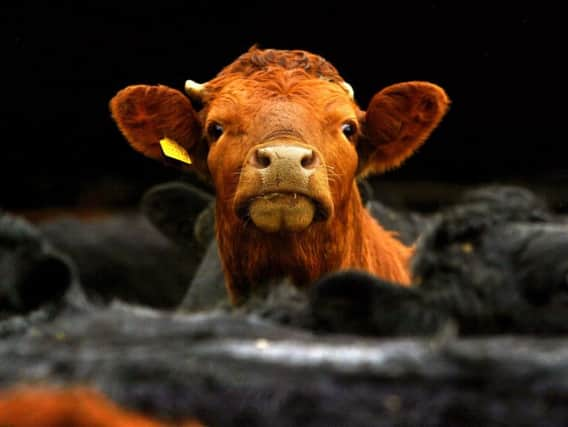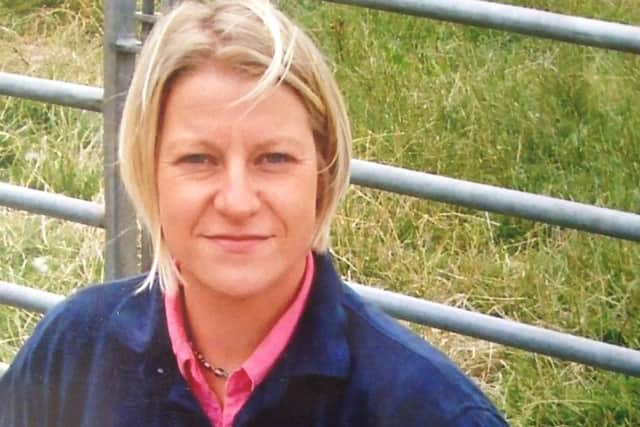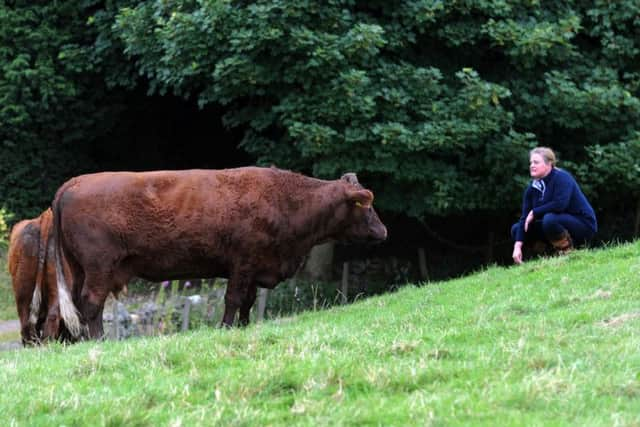Low risk bovine TB status must not mean complacency in disease fight, Yorkshire farmers told
This article contains affiliate links. We may earn a small commission on items purchased through this article, but that does not affect our editorial judgement.


‘Farmers have bigger bovine TB role than badger culls’, Godfray review claimsFarmers need better guidance on best bovine TB control measures, farm union saysChemical bans heap pressure on farmers to feed a growing nationPrevalence of the disease remains “very low” and “stable” in the low risk area, which includes Yorkshire, but it increased last year in ‘edge’ areas, that are located as far north as Cheshire, Nottinghamshire and Derbyshire and where fewer cases of the disease have been recorded than the high risk area.
Vast swathes of the South West fall into a high risk area which extends north into Staffordshire.
Advertisement
Hide AdAdvertisement
Hide AdSarah Tomlinson, a member of the national TB eradication and advisory group, is keen to get the message across that stringent biosecurity measures and careful stock buying decisions are vital to keeping Yorkshire and other low risk spots relatively disease-free.
Farmers have power to halt disease spread
Mrs Tomlinson, who spoke to farmers about the disease at meetings organised by the National Farmers’ Union (NFU) in Skipton, Bradfield, near Sheffield, and Askham Bryan, near York, this week, said she wants to empower farmers to be on the front foot.
“The Government has always told farmers when to test and what they can’t do when they get TB and it is frustrating for farmers because they feel as though they can’t control anything,” she said.
“My message to them is that TB is just another infectious disease. Farmers are embracing the battle against BVD (Bovine Viral Diarrhoea, a highly contagious viral disease in cattle) and are choosing to adopt measures on farms to stop their herds getting the disease, and there are similar things they can do to protect against the spread of TB.”


Skin test
Advertisement
Hide AdAdvertisement
Hide AdMrs Tomlinson, originally from Wheldrake, near York ,and now a farm vet based in Derbyshire, said she also wanted farmers to have a better understanding of the ‘skin test’ which is used by farm vets to detect and remove animals infected with the bTB bacterium before they can spread the disease to other animals.
“The skin test is very good at finding positive TB reactors. It is 99.97 per cent accurate at specifying the probability of finding a diseased animal. The downside is its sensitivity – the probability of identifying all animals in one go is about 80 per cent.”
She said this means that farmers looking to buy stock from other farms should find out when a herd last had a TB reactor, not just a test that came back all-clear.


Mrs Tomlinson said the ibTB website is an important tool for farmers as it maps all bovine tuberculosis outbreaks in England and Wales over the past five years, including 20 in Yorkshire.
Advertisement
Hide AdAdvertisement
Hide Ad“The majority of all breakdowns in North Yorkshire, for example, are as a result of cattle coming in from the high risk or edge area and then it is spread between cattle locally,” she said.
The most recent monthly bTB statistics published by the Government show that there were 3,555 new herd incidents in the 12 months to February – five per cent fewer than during the previous 12-month period.
Need to be well informed
Mrs Tomlinson said she was concerned however that there is a knowledge gap about how best to protect against the disease in the low risk area, and that this was understandable given that the disease was not as prominently fixed on the local agenda.
“Yorkshire is a low risk county, there are low levels of the disease here and we need to keep it that way,” she said.
Advertisement
Hide AdAdvertisement
Hide AdWorking as a vet in the edge area, Mrs Tomlinson has seen the devastation the disease can cause up close.
“TB has a massive impact on businesses. The average cost of a breakdown is £30,000 and nationally the bill for the disease is £100m a year. But more important than that is the impact on mental health, families and cash flow.
“It has a massive impact because all of a sudden the animals you thought you were going to send to the market in two weeks’ time, suddenly you can’t, and you also can’t bring any new stock in.”
She implored all farmers to prepare for the worst case scenario.
Advertisement
Hide AdAdvertisement
Hide Ad“Plan for it. Two months before your herd’s TB test is due, work out what you would do if the test comes back positive. Forecast your cash flow and hopefully, while it’s going to be hard, you have a plan.”
Duty of care
Beef farmer Rachel Hallos, the NFU’s West Riding county chairman, recruited Mrs Tomlinson to speak to farmers this week.
She said farmers had a “duty of care” to each other to act responsibly and shield the region from the disease.
“If we can all come together on this and start pre-empting what could happen, then it won’t happen, we will protect ourselves. We can’t rely on government policy alone to stop this,” Mrs Hallos said.